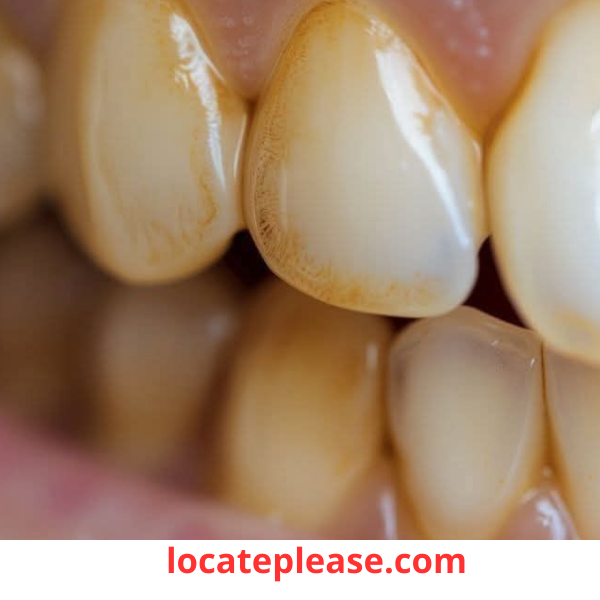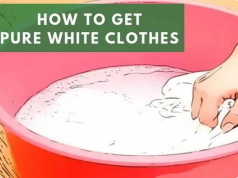Maintaining a bright, healthy smile is a top priority for many of us. However, frequent visits to the dentist and expensive teeth whitening treatments can be daunting, both financially and logistically. What if there were natural, affordable, and effective ways to remove tartar and whiten your teeth from the comfort of your home? While dentists are experts in oral health, they may not always share these simple alternatives. Below, we explore natural remedies and techniques that can help you achieve a cleaner, brighter smile without breaking the bank.
Understanding Tartar and Stains
Before diving into solutions, it’s essential to understand what tartar and stains are:
- Tartar: Also known as dental calculus, tartar forms when plaque hardens on your teeth due to poor oral hygiene. It creates a rough surface that attracts more bacteria, leading to cavities, gum disease, and bad breath.
- Teeth Stains: These occur due to various factors, including consuming coffee, tea, red wine, or tobacco. Over time, these substances leave pigmented particles on the enamel, dulling its natural shine.
While professional cleanings and whitening treatments are highly effective, incorporating natural methods into your routine can complement your dental care and prevent future buildup.
Natural Ways to Remove Tartar
Removing tartar naturally requires consistency and gentle techniques. Here are some tried-and-true methods:
1. Oil Pulling
- What It Is: An ancient Ayurvedic practice involving swishing oil (like coconut, sesame, or sunflower) around your mouth for 15–20 minutes.
- How It Helps: Oil pulling pulls out toxins and bacteria from your mouth, reducing plaque and preventing tartar buildup.
- How to Use: Swish 1–2 tablespoons of oil in your mouth on an empty stomach, then spit it out and rinse with warm water. Follow up with regular brushing.
2. Baking Soda Scrub
- What It Is: Baking soda (sodium bicarbonate) is a mild abrasive that neutralizes acids in the mouth.
- How It Helps: It breaks down tartar, removes surface stains, and restores the natural whiteness of teeth.
- How to Use: Mix 1 teaspoon of baking soda with a few drops of water to form a paste. Gently brush your teeth with the mixture 1–2 times per week.
3. Guava Peels and Leaves
- What It Is: Guava peels and leaves contain antibacterial properties and natural abrasives.
- How It Helps: Chewing guava leaves or rubbing peels on your teeth can reduce plaque and improve oral hygiene.
- How to Use: Wash guava leaves thoroughly, chew them for a few minutes, then spit them out. Alternatively, rub the inside of a guava peel on your teeth.
4. Aloe Vera Gel
- What It Is: Aloe vera has anti-inflammatory and antimicrobial properties.
- How It Helps: Applying aloe vera gel directly to your teeth can fight bacteria and reduce tartar formation.
- How to Use: Rub pure aloe vera gel onto your teeth and gums, leave it on for 10 minutes, then rinse thoroughly.
5. Dietary Changes
- What It Is: Consuming foods that promote oral health, such as crunchy fruits and vegetables.
- How It Helps: Apples, carrots, and celery act as natural toothbrushes, scraping away plaque while stimulating saliva production, which washes away bacteria.
- How to Use: Incorporate these foods into your daily diet for ongoing benefits.
Natural Ways to Whiten Teeth
If you’re looking to brighten your smile, here are some natural teeth-whitening remedies:
1. Strawberries and Baking Soda Paste
- What It Is: Strawberries contain malic acid, a natural enzyme that helps break down stains.
- How It Helps: Combined with baking soda, this mixture gently polishes teeth and removes surface discoloration.
- How to Use: Mash 1–2 strawberries, mix with ½ teaspoon of baking soda, and apply the paste to your teeth. Leave it on for 5 minutes, then rinse and brush thoroughly.
2. Activated Charcoal
- What It Is: Activated charcoal binds to toxins and impurities, including those causing stains.
- How It Helps: It absorbs surface stains without damaging enamel, leaving teeth noticeably whiter over time.
- How to Use: Dip a wet toothbrush into activated charcoal powder, brush gently for 2 minutes, then rinse thoroughly. Use once or twice a week.
3. Hydrogen Peroxide Rinse
- What It Is: Hydrogen peroxide is a natural bleaching agent that kills bacteria in the mouth.
- How It Helps: Diluted hydrogen peroxide can lighten stains and freshen breath.
- How to Use: Mix equal parts of 3% hydrogen peroxide and water. Swish the solution in your mouth for 30 seconds, then spit it out and rinse with water. Avoid swallowing.
4. Lemon or Orange Peel Rub
- What It Is: Citrus peels contain natural acids and vitamin C, which can help dissolve stains.
- How It Helps: Rubbing the white side of a lemon or orange peel on your teeth can brighten them over time.
- How to Use: Rub the peel on your teeth for 1–2 minutes, then rinse thoroughly. Limit use to avoid enamel erosion.
5. Turmeric Powder
- What It Is: Despite its yellow color, turmeric has anti-inflammatory and whitening properties.
- How It Helps: It reduces bacteria and stains without harsh abrasives.
- How to Use: Mix turmeric powder with water to form a paste, brush gently onto teeth, and rinse after 3–5 minutes.
Precautions and Tips
While natural remedies can be effective, they should complement—not replace—good oral hygiene practices. Here are some important tips:
- Avoid Overuse: Excessive scrubbing or acidic treatments can weaken enamel. Stick to recommended frequencies.
- Stay Hydrated: Drinking plenty of water helps wash away food particles and bacteria.
- Brush and Floss Daily: No remedy can substitute for proper brushing and flossing.
- Visit Your Dentist Regularly: Professional cleanings and check-ups are crucial for long-term oral health.
Achieving a healthier, whiter smile doesn’t always require expensive treatments or harsh chemicals. By incorporating natural remedies like oil pulling, baking soda scrubs, and dietary adjustments, you can reduce tartar buildup and brighten your teeth safely and affordably. Remember, consistency is key, and these methods work best when paired with good oral hygiene habits. So, take charge of your smile today—your teeth (and wallet) will thank you!










